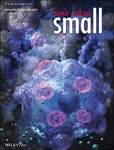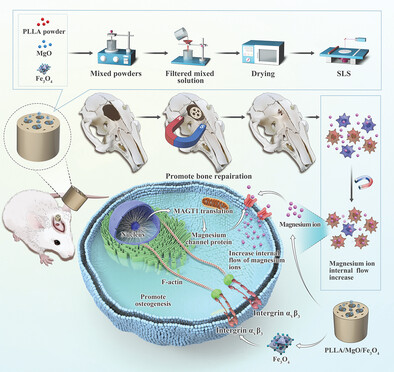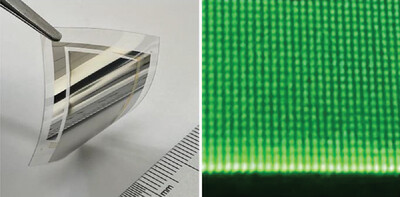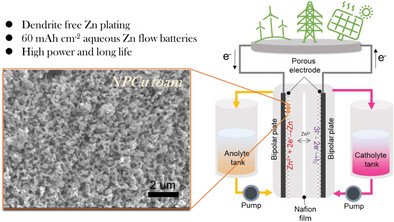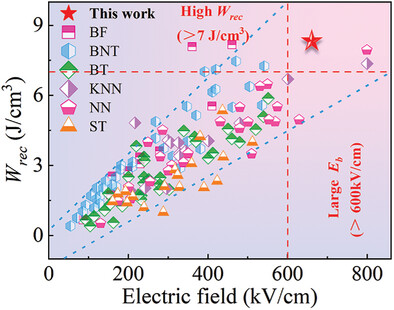Journal list menu
Export Citations
Download PDFs
Cover Picture
Encapsulation of Nano-Bortezomib in Apoptotic Stem Cell-Derived Vesicles for the Treatment of Multiple Myeloma (Small 40/2023)
- First Published: 04 October 2023
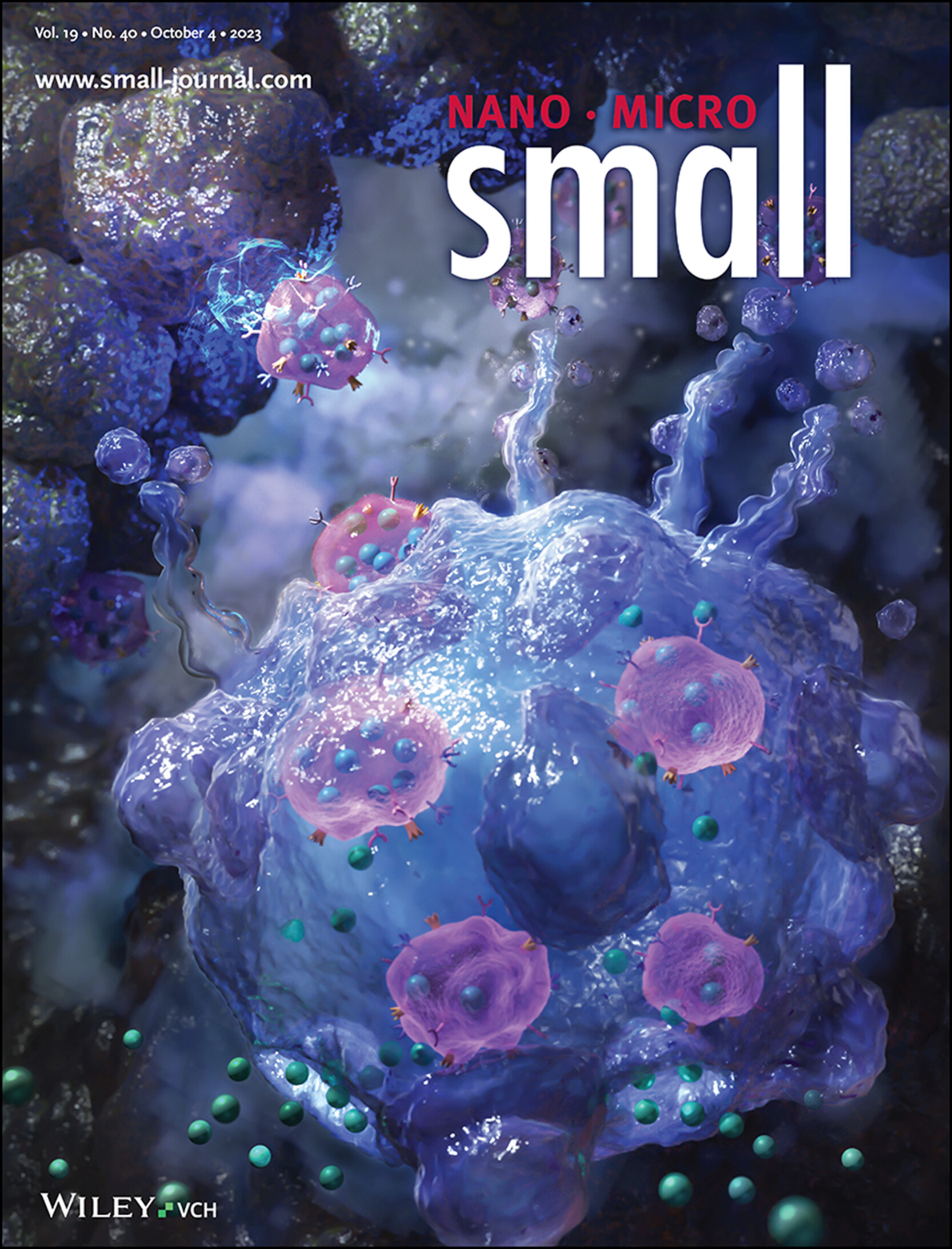
Mesenchymal Stem Cells
In article number 2301748, Peiyan Yuan, Songtao Shi, Xiaoxing Kou, and co-workers establish a naturally occurring apoptotic encapsulation system in apoptotic mesenchymal stem cells to efficiently generate stable nanodrug-apoVs capable of improving multiple myeloma treatment in mice.
Inside Front Cover
Dual-Defect Engineering of Bidirectional Catalyst for High-Performing Lithium-Sulfur Batteries (Small 40/2023)
- First Published: 04 October 2023
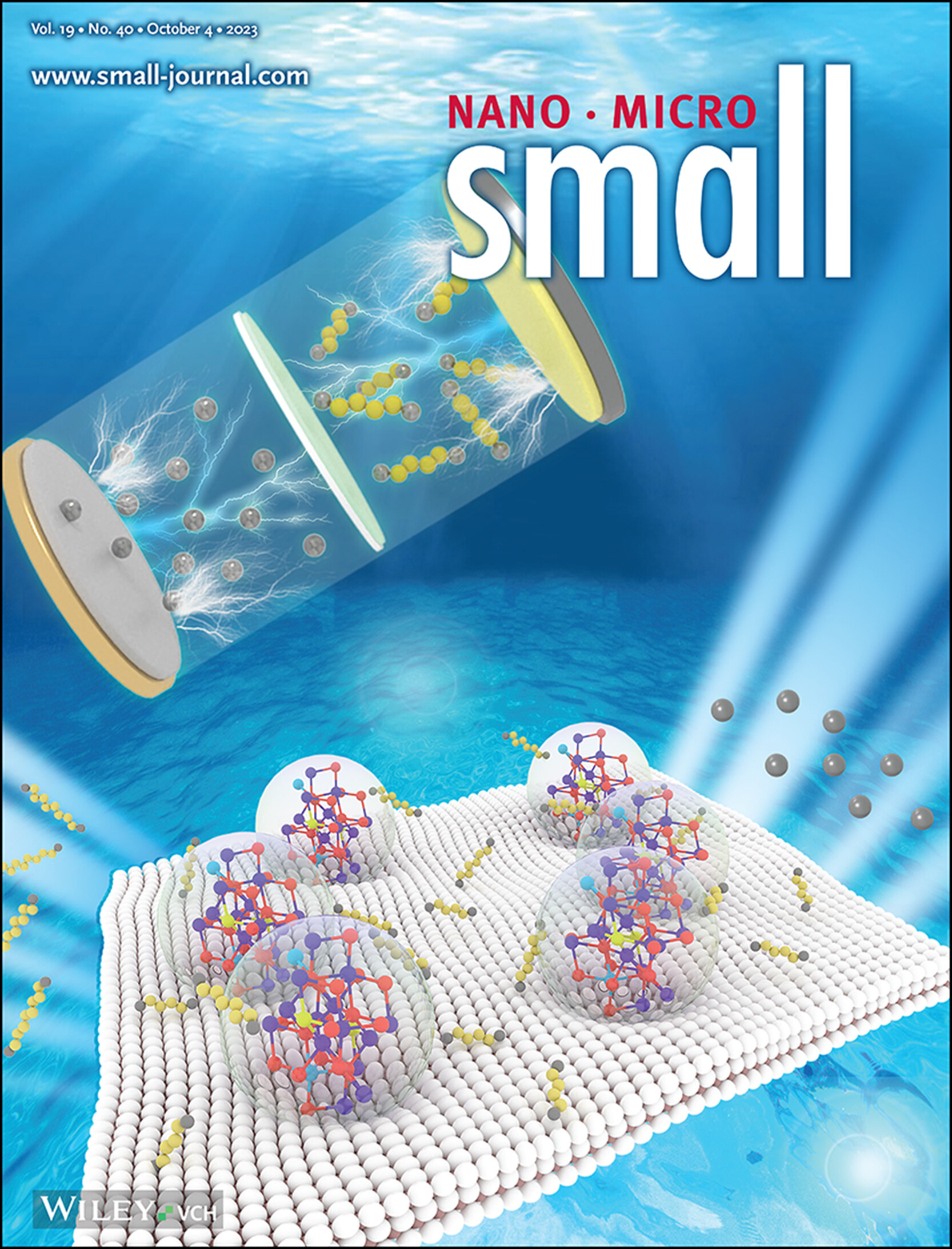
Lithium-Sulfur Batteries
In article number 2301545, Hao Sun, Shaochun Tang, and co-workers report a novel dual-defect catalyst comprised of Co-doped FeP with P vacancies on MXene (CoD-FePv@MXene), which serves as both deposition regulator and redox accelerator for Li2S electrochemistry. The P vacancies deliver more LiPSs adsorption/active sites for accelerating Li2S nucleation, and the Co doping produces local electric field to reduce reaction energy barrier for promoting Li2S dissolution.
Inside Back Cover
Exploring the Magnetic Properties of Individual Barcode Nanowires using Wide-Field Diamond Microscopy (Small 40/2023)
- First Published: 04 October 2023
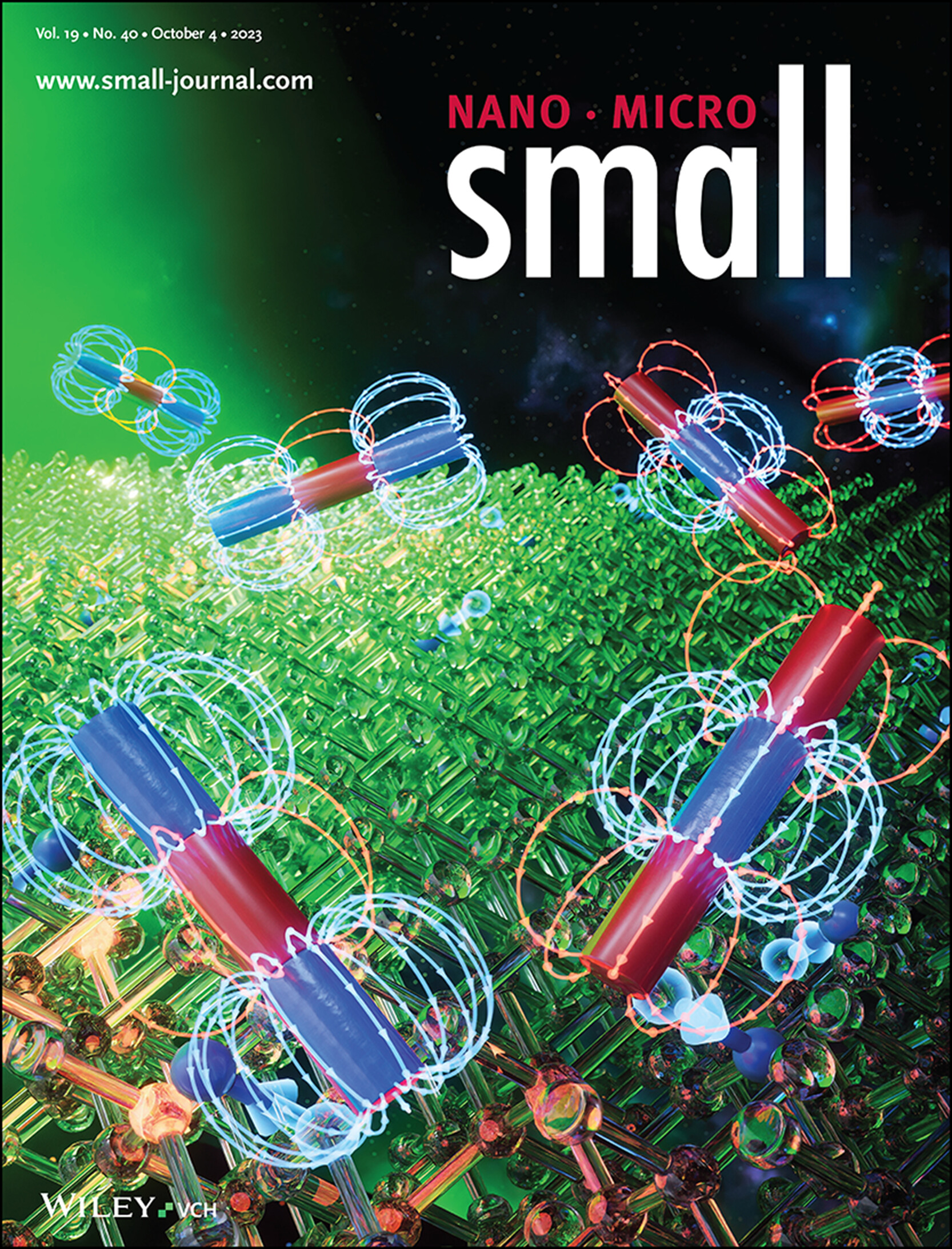
Individual Barcode Nanowires
A wide-field quantum microscope based on diamond nitrogen-vacancy centers is used to image the magnetic field from individual barcode magnetic nanowires made of multilayer magnetic structures such as Fe–Au and Fe–Co. The detailed analysis of magnetic images allows for the extraction of crucial magnetic properties of barcode magnetic nanowires such as magnetization and coercivity. More details can be found in article number 2304129 by Young Keun Kim, Donghun Lee, and co-workers.
Back Cover
In-Situ Fabrication of Sustainable-N-Doped-Carbon-Nanotube-Encapsulated CoNi Heterogenous Nanocomposites for High-Efficiency Electromagnetic Wave Absorption (Small 40/2023)
- First Published: 04 October 2023

Magnetic Nanoparticles
In article number 2302686, Jiurong Liu, Zhihui Zeng, and co-workers report a type of N-doped carbon nanotube encapsulated CoNi alloy nanocomposites with diverse heterostructures, which deliver excellent electromagnetic wave absorption performance involving a minimum reflection loss of −84.0 dB at the thickness of 3.2 mm and a maximum effective bandwidth of 4.3 GHz.
Masthead
Reviews
The Structure, Preparation, Characterization, and Intercalation Mechanism of Layered Hydroxides Intercalated with Guest Anions
- First Published: 04 June 2023
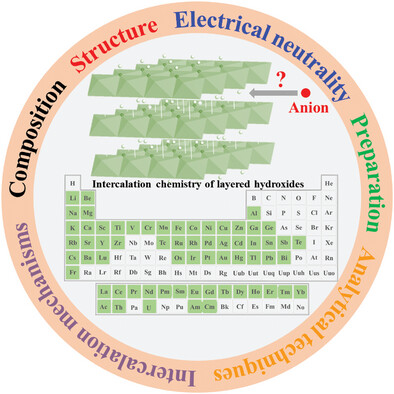
Scientists are intrigued by the intercalation chemistry of layered hydroxides (LHs) and its impact on structure, composition, and size of LHs. One comprehensive review can be a helpful resource for scientists regarding the progress of LHs intercalated with guest anions. However, there is currently a lack of systematic information about this topic. In this review, recent developments in LHs intercalated with guest anions, including composition and structure, synthesis methods, analytical techniques, and intercalation mechanisms are summarized.
Electrosynthesis of Hydrogen Peroxide through Selective Oxygen Reduction: A Carbon Innovation from Active Site Engineering to Device Design
- First Published: 02 June 2023
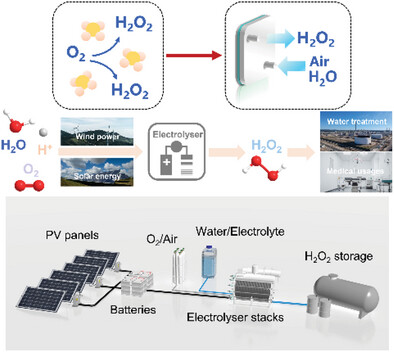
Carbon-based materials have emerged as efficient electrocatalysts for green hydrogen peroxide (H2O2) synthesis from a selective oxygen electroreduction. Here, the recent progress on carbon-based electrocatalysts for H2O2 electrosynthesis is summarized, focusing primarily on the fine tuning of active moieties and device design toward a high H2O2 selectivity and productivity.
Standardization Approaches for Extracellular Vesicle Loading with Oligonucleotides and Biologics
- First Published: 07 June 2023
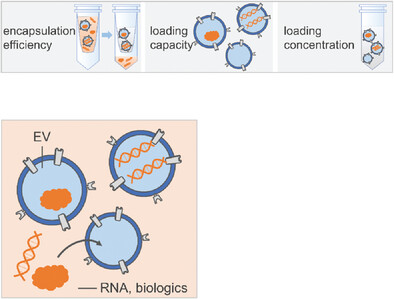
Extracellular vesicles (EVs) hold promise as drug delivery systems, especially for RNA and biologics. As the research field expands, standardization approaches are becoming increasingly important for the EV drug delivery field. This review condenses recent methods on EV drug loading under the perspective of standardization efforts in order to increase the comparability of future studies.
Exploring the Cutting-Edge Frontiers of Electrochemical Random Access Memories (ECRAMs) for Neuromorphic Computing: Revolutionary Advances in Material-to-Device Engineering
- First Published: 09 June 2023
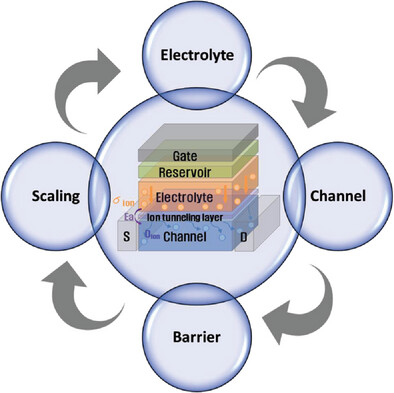
The performance of electrochemical random access memory (ECRAM) is heavily impacted by the electrolyte, channel, interface properties, and device architecture. A comprehensive overview of strategies is presented for regulating the analog switching characteristics and improving the performance and reliability of ECRAMs. The remaining challenges and perspectives for advanced material and device engineering for ECRAMs are also discussed.
Frontispiece
Vascular Electrical Stimulation with Wireless, Battery-Free, and Fully Implantable Features Reduces Atherosclerotic Plaque Formation Through Sirt1-Mediated Autophagy (Small 40/2023)
- First Published: 04 October 2023
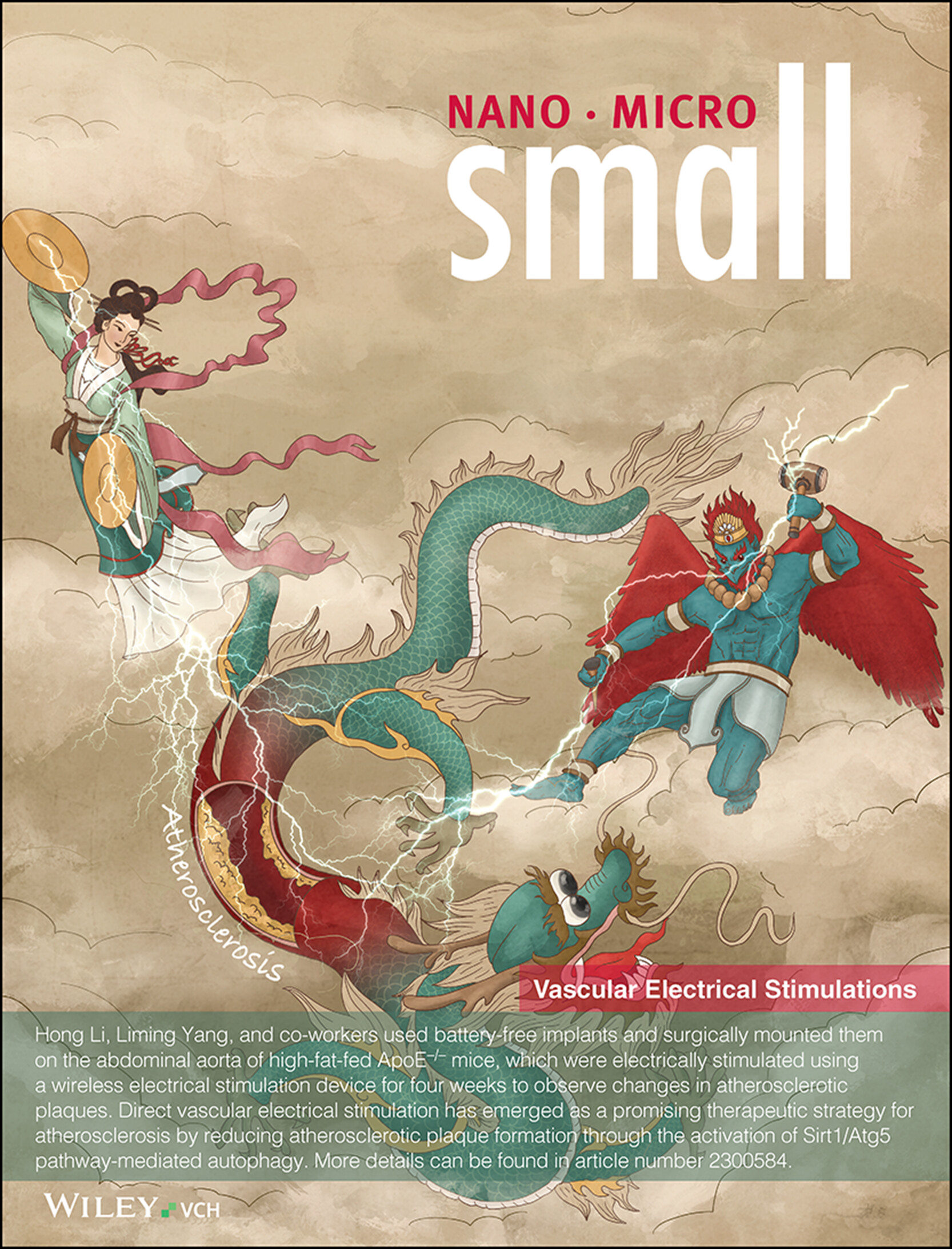
Vascular Electrical Stimulations
Hong Li, Liming Yang, and co-workers used battery-free implants and surgically mounted them on the abdominal aorta of high-fat-fed ApoE-/- mice, which were electrically stimulated using a wireless electrical stimulation device for four weeks to observe changes in atherosclerotic plaques. Direct vascular electrical stimulation has emerged as a promising therapeutic strategy for atherosclerosis by reducing atherosclerotic plaque formation through the activation of Sirt1/Atg5 pathway-mediated autophagy. More details can be found in article number 2300584.
Research Articles
Vascular Electrical Stimulation with Wireless, Battery-Free, and Fully Implantable Features Reduces Atherosclerotic Plaque Formation Through Sirt1-Mediated Autophagy
- First Published: 02 June 2023
Frontispiece
Continuous Vat Photopolymerization for Optical Lens Fabrication (Small 40/2023)
- First Published: 04 October 2023
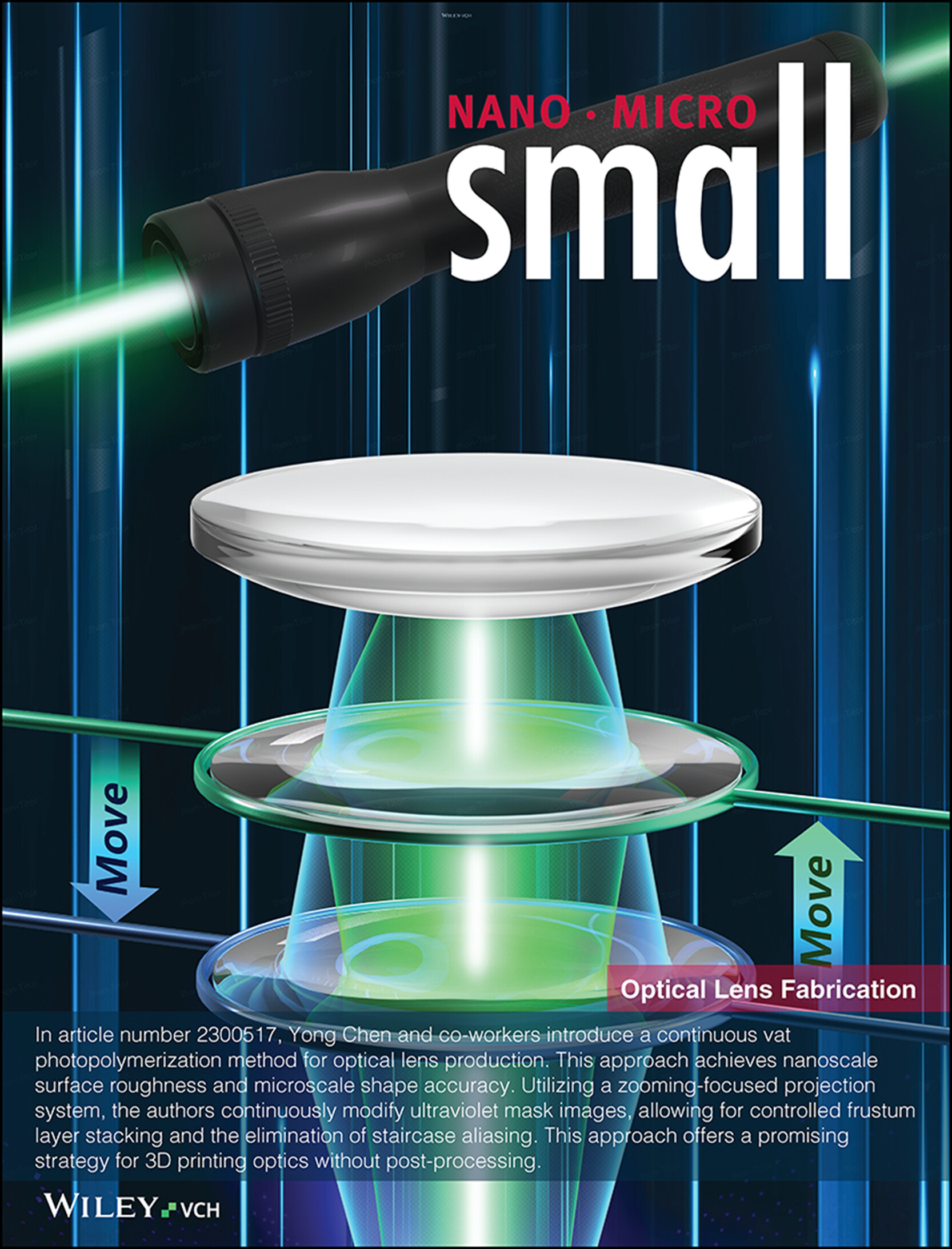
Optical Lens Fabrication
In article number 2300517, Yong Chen and co-workers introduce a continuous vat photopolymerization method for optical lens production. This approach achieves nanoscale surface roughness and microscale shape accuracy. Utilizing a zooming-focused projection system, the authors continuously modify ultraviolet mask images, allowing for controlled frustum layer stacking and the elimination of staircase aliasing. This approach offers a promising strategy for 3D printing optics without post-processing.
Research Articles
Continuous Vat Photopolymerization for Optical Lens Fabrication
- First Published: 28 May 2023
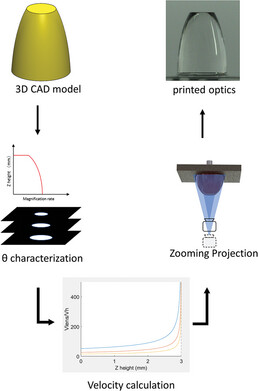
A continuous vat photopolymerization process for optical lens fabrication is presented, utilizing frustum layer stacking to eliminate staircase aliasing. To achieve nanoscale surface roughness and microscale shape accuracy, a zooming-focused projection system is used to modify projection images continuously, enabling the generation of frustum layers with controlled slant angles. This innovative approach presents a promising strategy for high-resolution optics fabrication without post-processing.
Frontispiece
A Dual-Targeting Liposome Enhances Triple-Negative Breast Cancer Chemoimmunotherapy through Inducing Immunogenic Cell Death and Inhibiting STAT3 Activation (Small 40/2023)
- First Published: 04 October 2023
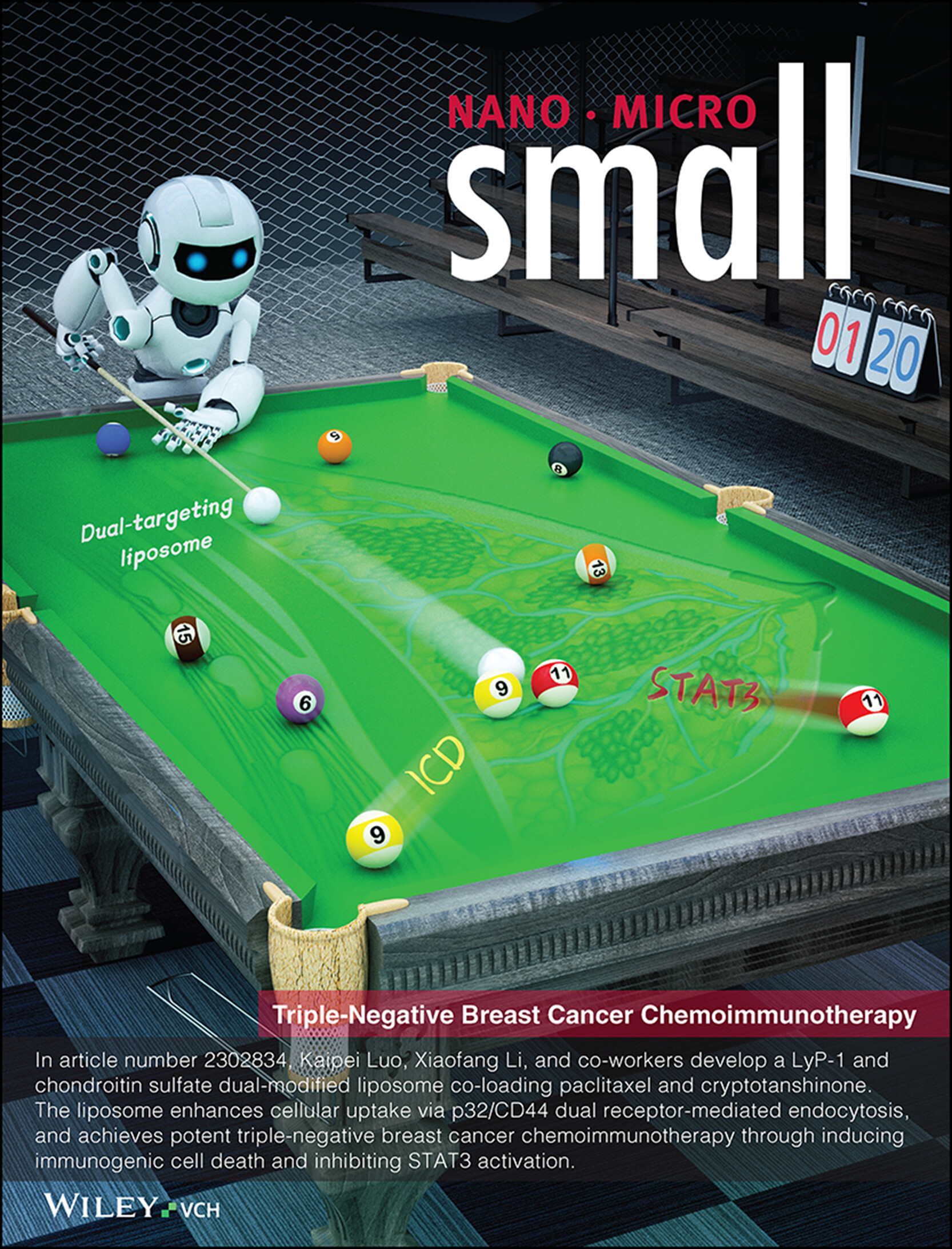
Triple-Negative Breast Cancer Chemoimmunotherapy
In article number 2302834, Kaipei Luo, Xiaofang Li, and co-workers develop a LyP-1 and chondroitin sulfate dual-modified liposome co-loading paclitaxel and cryptotanshinone. The liposome enhances cellular uptake via p32/CD44 dual receptor-mediated endocytosis, and achieves potent triple-negative breast cancer chemoimmunotherapy through inducing immunogenic cell death and inhibiting STAT3 activation.
Research Articles
A Dual-Targeting Liposome Enhances Triple-Negative Breast Cancer Chemoimmunotherapy through Inducing Immunogenic Cell Death and Inhibiting STAT3 Activation
- First Published: 01 June 2023
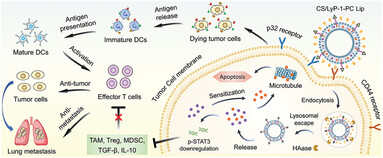
A LyP-1 and chondroitin sulfate dual-modified liposome co-loading paclitaxel (PTX) and cryptotanshinone (CTS) is developed. The well-designed liposome enhances cellular uptake via binding to p32/CD44 dual receptor. Anti-tumor immunogenicity can be provoked by PTX-triggered immunogenic cell death, while CTS inhibits STAT3 activation to reverse immunosuppressive tumor microenvironment, achieving potent triple-negative breast cancer chemoimmunotherapy.
Encapsulation of Nano-Bortezomib in Apoptotic Stem Cell-Derived Vesicles for the Treatment of Multiple Myeloma
- First Published: 06 June 2023
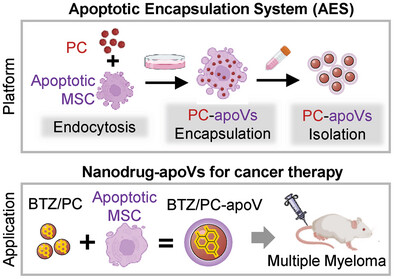
This study establishes a naturally occurring apoptotic encapsulation system (AES) in apoptotic mesenchymal stem cells to efficiently generate stable nanodrug-apoVs (apoptotic vesicles) capable of improving multiple myeloma treatment in mice. The experimental evidence indicates that this AES can serve as an approach to produce large-scale clinical grade nanodrug-apoVs, which can be expanded to the application in other diseases.
Dual-Defect Engineering of Bidirectional Catalyst for High-Performing Lithium-Sulfur Batteries
- First Published: 07 June 2023
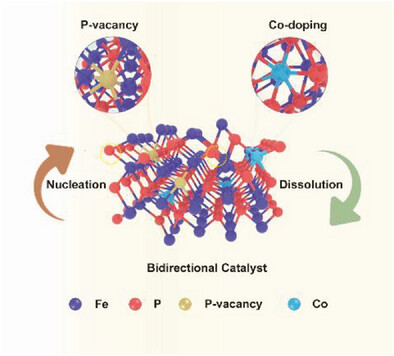
A double-defect engineering strategy for preparing Co-doped FeP catalyst containing P vacancies on MXene, which effectively improves the bidirectional redox of Li2S. The results of experiments and density functional theory (DFT) confirm that P vacancy accelerates Li2S nucleation via increased unsaturated sites, and Co doping generates local electric field to reduce the reaction energy barrier and accelerate Li2S dissolution.
Exploring the Magnetic Properties of Individual Barcode Nanowires using Wide-Field Diamond Microscopy
- First Published: 01 June 2023
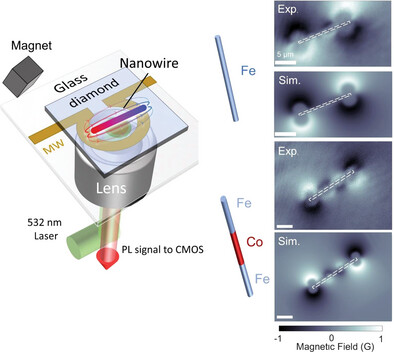
Wide-field quantum microscopy based on diamond nitrogen-vacancy centers is used to image single barcode magnetic nanowires in ambient condition including Fe, Co, Fe-Au, and Fe-Co nanowires. By comparing experiment images to numerical simulations, critical magnetic properties of single nanowires can be extracted such as saturation, magnetization, and coercivity. The method is relatively simple and easy to operate and, thus, provides a versatile tool for various applications based on magnetic nanostructures.
In-Situ Fabrication of Sustainable-N-Doped-Carbon-Nanotube-Encapsulated CoNi Heterogenous Nanocomposites for High-Efficiency Electromagnetic Wave Absorption
- First Published: 19 May 2023
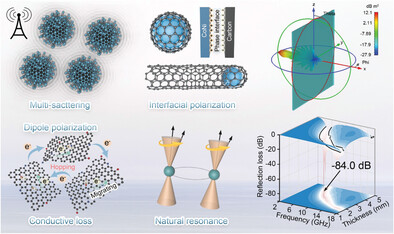
A type of N-doped carbon nanotube encapsulated CoNi alloy nanocomposites with diverse heterostructures are synthesized via the facile, sustainable autocatalytic pyrolysis, which delivers a minimum reflection loss of −84.0 dB at the thickness of 3.2 mm and a maximum effective bandwidth of 4.3 GHz at a low filling ratio of 20 wt%.
A Conformal Protective Skin Producing Stable Cathode-Electrolyte Interface for Long-Life Potassium-Ion Batteries
- First Published: 01 June 2023
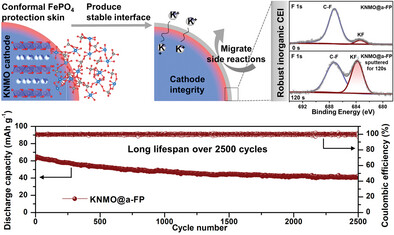
The surface engineering via building conformal FePO4 (a-FP) skin provides long-term protection for K0.5Ni0.1Mn0.9O2 (KNMO) cathode surface, blocking irreversible interfacial reactions and maintaining the cathode integrity. Moreover, high-quality and inorganic-rich CEI film with excellent K-transport ability and the reduced transition metal dissolution in electrolyte enable breakthroughs in the cycling life of the K-based layered cathodes, reaching 2500 cycles.
Photo-Induced Construction and Recovery of Cu+ Sites in Metal–Organic Frameworks
- First Published: 01 June 2023
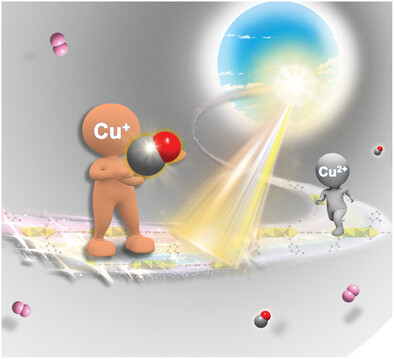
Cu+ species are able to selectively capture unsaturated molecules due to the π-complexation, while it is easily oxidized to Cu2+, resulting in the loss of such an ability. This work demonstrates that a facile photo-induced strategy is effective in not only the construction of Cu+ sites in a metal–organic framework but also their reversible recovery from the oxidized counterparts.
3D-Printed Piezoelectric Scaffolds with Shape Memory Polymer for Bone Regeneration
- First Published: 01 June 2023
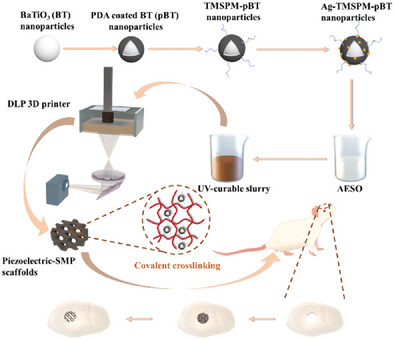
Shape memory polymer (SMP) is combined with piezoelectric ceramic to develop novel 3D-printed piezoelectric ceramic-SMP composite scaffolds. A piezoelectric nanoparticle is used to improve the piezoelectric properties of the scaffolds by covalent functionalization and conductive Ag nanoparticle deposition. The piezoelectric property of scaffolds can promote bone regeneration by electrical stimulation.
Structural Properties and Surface Modification Decided Pharmacokinetic Behavior and Bio-Distribution of DNA Origami Frameworks in Mice
- First Published: 01 June 2023
Disentangling the Li-Ion transport and Boundary Phase Transition Processes in Li10GeP2S12 Electrolyte by In-Operando High-Pressure and High-Resolution NMR Spectroscopy
- First Published: 01 June 2023
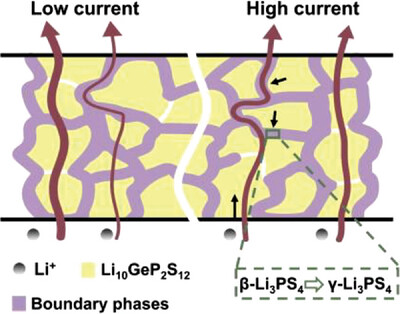
Investigation of phase transition and Li+ transport in solid electrolytes during operation is greatly important but restrained by the state-of-the-art techniques. This work reports an in-operando high-pressure nuclear magnetic resonance (NMR) for solid-state batteries, which can be applied for the study under true-to-life conditions. The Li10GeP2S12 is examined as an example, revealing the varied transport pathways and boundary phase transitions under high current.
Hierarchical and Orderly Surface Conductive Networks in Yolk–Shell Fe3O4@C@Co/N-Doped C Microspheres for Enhanced Microwave Absorption
- First Published: 01 June 2023
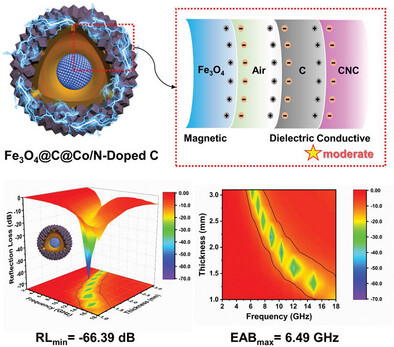
A novel microwave absorber with orderly surface conductive networks in the yolk–shell structure is developed via the metal–organic frameworks (MOFs) derivatives. Moderate conduction together with magnetic and dielectric loss contributes to enhanced microwave absorption and attenuation properties. The minimum reflection loss is −66.39 dB, while the effective absorption bandwidth is up to 6.49 GHz.
Self-Assemble Silk Fibroin Microcapsules for Cartilage Regeneration through Gene Delivery and Immune Regulation
- First Published: 01 June 2023
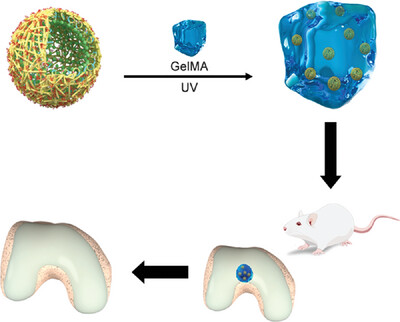
In this study, He et al. develop a functional self-assemble silk fibroin microcapsules (SFMs) delivery system for cartilage regeneration. Heparin disaccharide is coated to SFMs by click chemistry to adsorb interleukin-4 (IL-4), lysyl oxidase plasmid DNA (LOX pDNA) is encapsulated into SFMs to promote matrix deposition and collagen cross-linking of cartilage. Results show that this delivery system significantly promotes cartilage regeneration.
Dual-Stimuli Cooperative Responsive Hydrogel Microactuators Via Two-Photon Lithography
- First Published: 01 June 2023
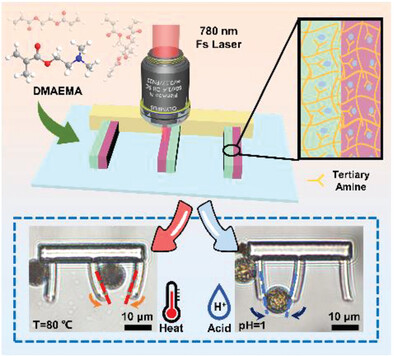
Asymmetric hydrogel microactuators with dual-stimuli cooperative response have been fabricated by femtosecond laser direct writing (FsLDW) technique. The microactuator allows for the capture of polystyrene (PS) microspheres through pH and/or temperature-driven responsive behavior. The strategy proposed in this study is promising for the potential applications in the fields of microrobotics and microfluidics.
Janus Dual Self-Strengthening Structure of Bi2O3/Gd2O3 Nanofibrous Membranes for Superior X-Ray Shielding
- First Published: 01 June 2023
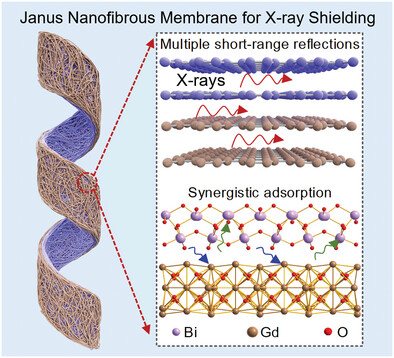
Here, a Janus dual self-strengthening structure of Bi2O3/Gd2O3 nanofibrous membranes for superior X-ray shielding is reported. The membranes demonstrate integrated features of exceptional X-ray shielding efficiency, robust interfacial adhesion, prominent flexibility, lightweight, and outstanding breathability. The design concepts pave the way for asymmetrically assembling biphasic materials, setting the stage for a fundamental shift in next-generation radiation shielding materials.
Sodium-Ion Substituted Water Molecule in Layered Vanadyl Phosphate Enhancing Electrochemical Kinetics and Stability of Zinc Ion Storage
- First Published: 01 June 2023
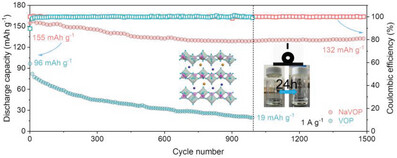
Sodium ions incorporated layered vanadyl phosphates exhibit improved structural stability and enhanced electronic conductivity, leading to a much-enhanced zinc ion storage capacity, improved intercalation kinetics as well as charge and ion transport property. More specifically, the in situ surface oxidization results in the increase of discharge capacity, and the hydrophobic surface has eliminated the dissolution of active materials.
Combining Structural Modification and Electrolyte Regulation to Enable Long-Term Cyclic Stability of MoO3-x@TiO2 as Cathode for Aqueous Zn-Ion Batteries
- First Published: 01 June 2023
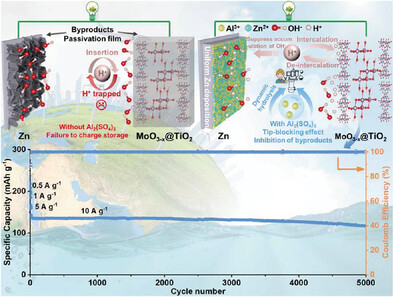
This article establishes the mechanism of proton intercalation into MoO3 and proposes a joint strategy combining structural modification with electrolyte regulation to enhance the cyclic stability of MoO3 without sacrificing its capacity. In the ZnSO4 electrolyte with Al2(SO4)3 additive, TiO2 coated oxygen deficient α-MoO3 delivers a reversible capacity of 93.2 mA h g−1 at 30 A g−1 after 5000 cycles.
The In Situ Optimization of Spinterface in Polymer Spin Valve by Electronic Phase Separated Oxides
- First Published: 01 June 2023
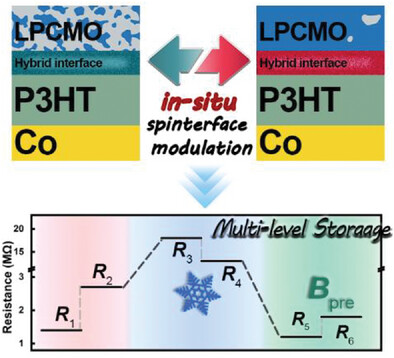
In situ spinterface modulation is achieved in LPCMO/P3HT/Co polymer spin valve with vertical structure through electronic phase separated (EPS) ferromagnetic (FM) electrode. The EPS states inside LPCMO will affect the spin injection efficiency at spinterface and thus change device magnetoresistance (MR), which can be used to create multiple working states in the device.
Zero Threshold for Water Adsorption on MAPbBr3
- First Published: 02 June 2023
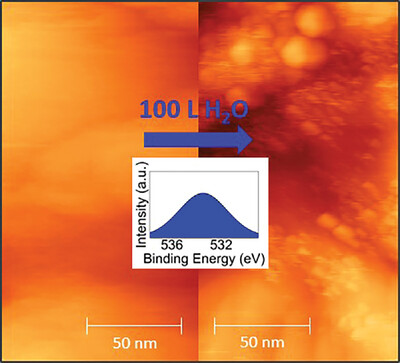
Measurement of the surface nanostructure and evolution of in situ cleaved MAPbBr3(001) upon controlled exposure to low levels of water vapor shows that there is no onset threshold for water adsorption. The associated surface restructuring is consistent with a Volmer-Weber island growth model, with strain released through surface defect formation.
Magnetic Field Boosts the Transmembrane Transport Efficiency of Magnesium Ions from PLLA Bone Scaffold
- First Published: 04 June 2023
Macrocycle Self-Assembly Hydrogel for High-Efficient Oil–Water Separation
- First Published: 04 June 2023
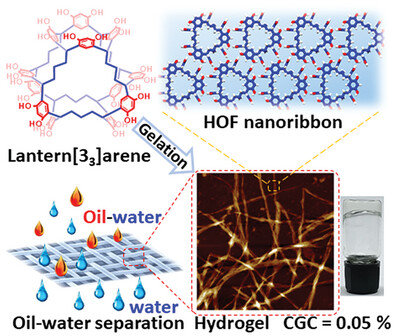
A lantern[33]arene based hydrogel with rather low critical gelation concentration (0.05 wt%) is constructed by acidification of the potassium salt of lantern[33]arene. In addition, the lantern[33]arene based hydrogel can be generated in situ on stainless-steel mesh, giving a super-hydrophilic and underwater super-oleophobic surface, which is used for efficient oil–water separation.
Nonconventional Luminescent Piperazine-Containing Hyperbranched Polysiloxanes with Pure n-electron
- First Published: 02 June 2023
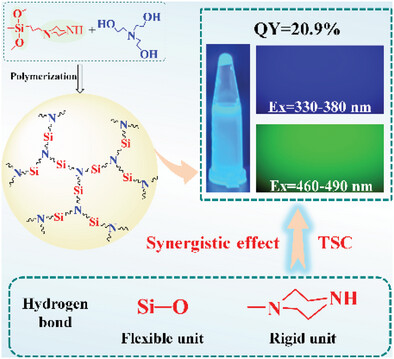
Piperazine-containing hyperbranched polysiloxane are successfully fabricated, which exhibits the blue and green fluorescence irradiated by different excitation wavelength with a high QY of 20.9%. The through-space congugation within the clusters of N and O atoms is produced via the induction of multiple intermolecular hydrogen bonds and flexible SiO units, which is root of the fluorescence.
[Ba4(S2)][ZnGa4S10]: Design of an Unprecedented Infrared Nonlinear Salt-Inclusion Chalcogenide with Disulfide-Bonds
- First Published: 04 June 2023
![[Ba4(S2)][ZnGa4S10]: Design of an Unprecedented Infrared Nonlinear Salt-Inclusion Chalcogenide with Disulfide-Bonds](/cms/asset/a8d312de-92c6-430b-b024-db955a567335/smll202302819-gra-0001-m.jpg)
π-conjugated (S2)2− units are introduced into AgGaS2-like (AGS-like) salt-inclusion chalcogenide (SIC), which result in the synthesis of the first disulfide-bond-containing SIC, [Ba4(S2)][ZnGa4S10]. It realizes a perfect balance among three critical optical properties (Eg = 3.39 eV, dij = 0.9 × AGS, Δn = 0.053@1064 nm) indicating [Ba4(S2)][ZnGa4S10] is a promising IR NLO crystal.
Carrier Transport Regulation of Pixel Graphene Transparent Electrodes for Active-Matrix Organic Light-Emitting Diode Display
- First Published: 02 June 2023
Homogenizing Zn Deposition in Hierarchical Nanoporous Cu for a High-Current, High Areal-Capacity Zn Flow Battery
- First Published: 03 June 2023
Ceo2/Cus Nanoplates Electroreduce Co2 to Ethanol with Stabilized Cu+ Species
- First Published: 03 June 2023
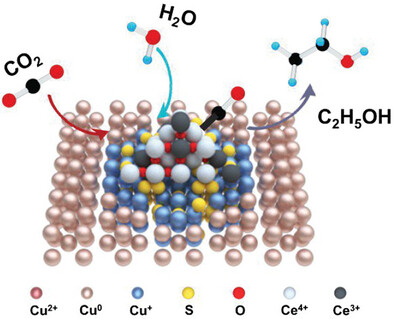
Generating stable active sites can improve the activity and selectivity of the catalyst. CeO2/CuS catalysts perform a Faradaic efficiency of 75.2% for the C2+ products and a total current density of 160 mA cm−2 in a flow cell. CeO2 can effectively stabilize the Cu+ species due to its facile redox cycle (Ce4+ ↔ Ce3+), thus facilitate CC coupling and formation of *COCHO.
Organizing Uniform Phase Distribution in Methylammonium-Free 1.77 eV Wide-Bandgap Inverted Perovskite Solar Cells
- First Published: 03 June 2023
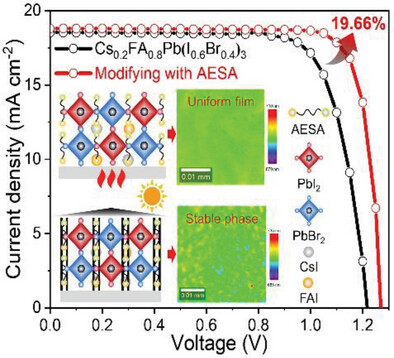
Uncompleted solvent-assisted complexation effects are found to cause disordered crystallization and phase segregation in mixed halide perovskite film. By introducing the zwitterionic molecule aminoethanesulfonic acid into the precursor, a uniform film with much-improved phase stability can be realized. A new performance record of 19.66% is obtained for wide-bandgap (1.77 eV) p-i-n devices.
High-Performance, Light-Stimulation Healable, and Closed-Loop Recyclable Lignin-Based Covalent Adaptable Networks
- First Published: 03 June 2023
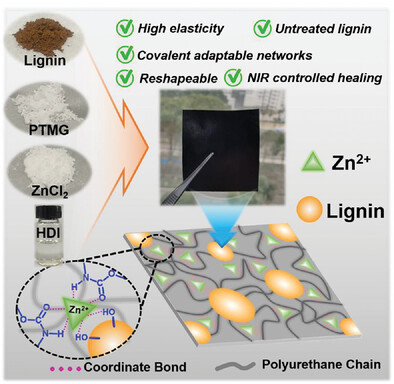
A high-performance, light-controlled healable, and closed-loop recyclable covalent adaptable lignin-based polyurethane Zn2+ coordination networks (LPUxZy) are successfully prepared. The photoconversion efficiency is significantly improved, especially after coordination with Zn2+. LPUs are able to be self-heal photothermally. The LPUs have broad application potentials as recyclable and healable stimuli-responsive elastomers.
Metal-Organic Frameworks as a New Platform to Construct Ordered Mesoporous Ce-Based Oxides for Efficient CO2 Fixation under Ambient Conditions
- First Published: 03 June 2023
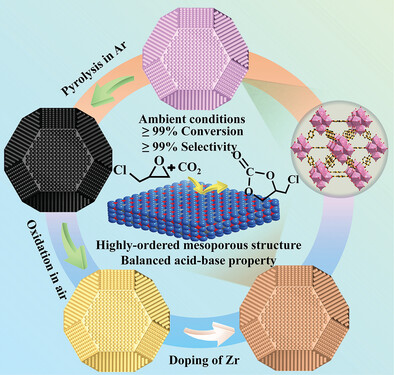
This study employs MOFs as a new platform to construct highly-ordered mesoporous Ce-based oxides by developing a facile mesopore-inherited pyrolysis-oxidation strategy. The optimized Zr-doped OM-CeO2 can efficiently catalyze the cycloaddition of epichlorohydrin with CO2 under ambient conditions, achieving above 16 times higher catalytic activity than its solid CeO2 counterpart for this reaction.
Single-Atom Catalysts and Dual-Atom Catalysts for CO2 Electroreduction: Competition or Cooperation?
- First Published: 02 June 2023
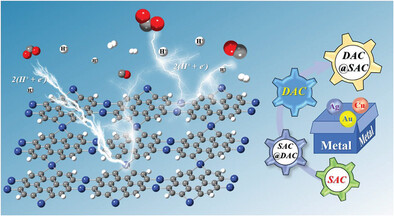
The electrocatalysts with noble metallic (Cu, Ag, and Au) active sites embedded in metal–organic hybrids (MOHs) for high-performance CO2RR have been explored by first-principles calculations. The relationship between single-atom catalysts (SACs) and dual-atom catalysts (DACs) is revealed, showing both competition and cooperation between SAC and DAC sites, which paves the way for the future design of CO2RR electrocatalysts.
Void Volume Fraction of Granular Scaffolds
- First Published: 02 June 2023
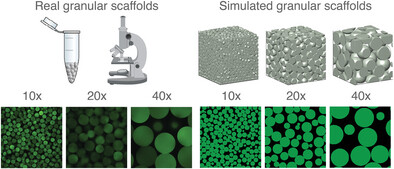
The void volume fraction (VVF) of granular scaffolds is challenging to measure accurately. 3D simlulated scaffolds are used to study VVF, and with access to a ground truth, the work reveals relationships between VVF and a number of factors. For real microscope images, user preference for software, magnification, and threshold parameters has significant influence on the final reported VVF.
Design of High-Capacity MoS3 Decorated Nitrogen Doped Carbon Coated Cu2S Electrode Structures with Dual Heterogenous Interfaces for Outstanding Sodium-Ion Storage
- First Published: 02 June 2023
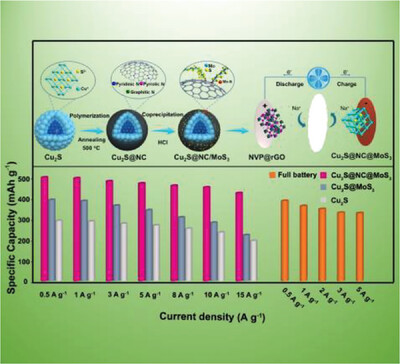
Herein, the hierarchical three-layer Cu2S@NC@MoS3 heterostructures have been well designed via a multi-step strategy. Due to the cooperative effect of three components, the Cu2S@NC@MoS3 heterostructures with dual heterogenous interfaces as the new anode materials for sodium ion batteries exhibit superior cycling stability and rate performance.
Electron Injection via Interfacial Atomic Au Clusters Substantially Enhance the Visible-Light-Driven Photocatalytic H2 Production of the PF3T Enclosed TiO2 Nanocomposite
- First Published: 02 June 2023
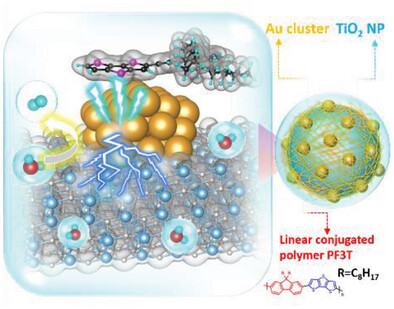
With a strong electron coupling between the terthiophene groups, Au atoms, and the oxygen atoms at the heterogeneous interface, a significant electron injection from PF3T to TiO2 occurs leading to a quantum leap in the H2 production yield (18 578 µmol g−1 h−1) by ≈39% as compared to that of the composite without Au decoration (PF3T@TiO2, 11 321 µmol g−1 h−1).
Interfacial Chemistry Effects in the Electrochemical Performance of Silicon Electrodes under Lithium-Ion Battery Conditions
- First Published: 03 June 2023
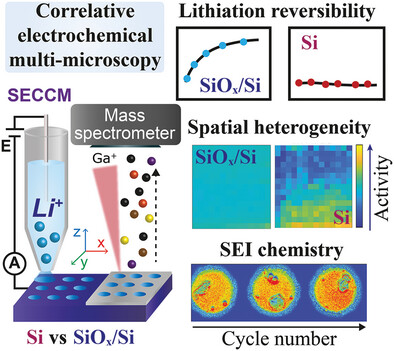
Silicon holds great potential for lithium-ion batteries (LiBs). Through a novel correlative electrochemical multi-microscopy approach, the role of the native oxide layer on silicon electrochemistry is revealed. Removing this interfacial layer leads to spatially uneven activity, weaker surface passivation by the solid-electrolyte interphase (SEI), and poorer lithiation reversibility due to increased lithium trapping.
Molten-Salt Electrochemical Deoxidation Synthesis of Platinum-Neodymium Nanoalloy Catalysts for Oxygen Reduction Reaction
- First Published: 06 June 2023
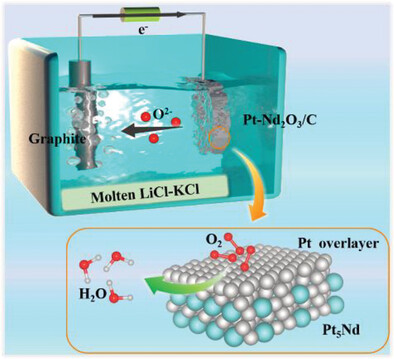
This paper provides a strategy for synthesis of platinum-neodymium (Pt-Nd) nanoalloys through molten-salt electrochemical deoxidation of platinum and neodymium oxide (Pt-Nd2O3) precursors. The as-prepared Pt5Nd nanoalloys with several pure Pt layers on surface exhibit more favorable oxygen reduction reaction (ORR) performance and remarkable stability in acid electrolytes than commercial Pt/C due to the compressive strain effect of Pt overlayer.
Surface Self-Transforming FeTi-LDH Overlayer in Fe2O3/Fe2TiO5 Photoanode for Improved Water Oxidation
- First Published: 06 June 2023
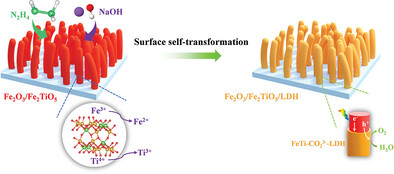
A surface self-transformation strategy is developed to generate the FeTi-layer double hydroxides (LDH) overlayer on the Fe2O3/Fe2TiO5 photoanode to boost the photoelectrochemical (PEC) water oxidation activity by facilitating surface charge transfer/separation and accelerating oxygen evolution reaction (OER) kinetics.
Sustainable and Scalable Synthesis of 2D Ultrathin Hierarchical Porous Carbon Nanosheets for High-Performance Supercapacitor
- First Published: 06 June 2023
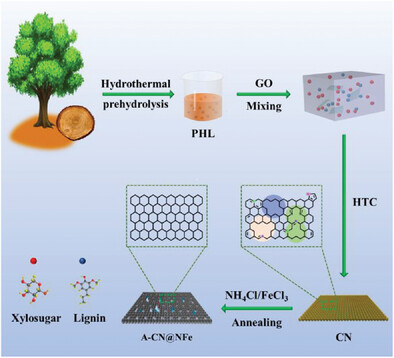
This study employs pre-hydrolysis liquor (PHL), a byproduct of the pulping industry, as a small molecule carbon resource to construct a 2D ultrathin carbon nanosheet (A-CN@NFe) and uses it for high-performance supercapacitor (SC). This opens a new window for the scalable synthesis of low-cost and sustainable carbon nanosheets and also shows great prospects for pulping industry and energy storage fields.
Direct Fast-Neutron Detection by 2D Perovskite Semiconductor
- First Published: 06 June 2023

2D Dion–Jacobson perovskite semiconductor BDAPbBr4 for direct fast-neutron detection, providing high fast-neutron caption cross-section, good electrical stability, high resistivity, and, high μτ product of 3.3 × 10-4 cm2 V-1. BDAPbBr4 detector exhibited good response to fast-neutrons, not only achieving fast-neutron energy spectra in counting mode, but also obtaining linear and fast response in integration mode.
A Highly Transparent Photo-Electro-Thermal Film with Broadband Selectivity for All-Day Anti-/De-Icing
- First Published: 06 June 2023
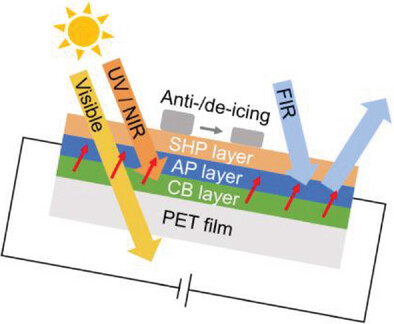
A highly transparent and scalable solution-processed photo-electro-thermal film is designed, which exhibits an ultra-broadband selective spectrum to separate the visible light from sunlight and a countertrend suppress of emission in longer wavelength. It enables efficient light-heat transfer and surface temperature preservation. The reverberation from photo-electro-thermal and super-hydrophobic effects exhibits anti-/de-icing performance with significant potential of energy-saving in all-day applications.
Insights to Carrier-Phonon Interactions in Lead Halide Perovskites via Multi-Pulse Manipulation
- First Published: 06 June 2023
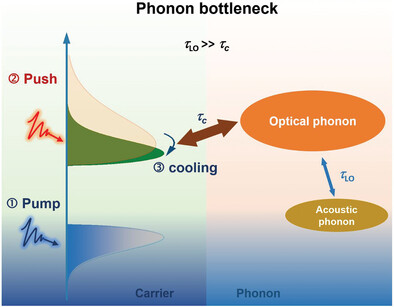
This study presents a unified model for determining the initial carrier densities and carrier temperature using the three-pulse pump-push-probe spectroscopy in halide perovskites. The phonon bottleneck model is used to rationalize the results, determining the phonon scattering times for MAPbBr3 and MAPbI3. This work paves the way for a deeper understanding of hot carrier cooling in next-generation photovoltaic materials.
Construction of Microfluidic Chip Structure for Cell Migration Studies in Bioactive Ceramics
- First Published: 06 June 2023
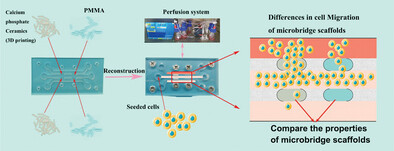
This work reconstructs a microfluidic chip to integrate the bioactive ceramic into the microfluidic chip structure to constitute a ceramic microbridge microfluidic chip system. Migration differences in the chip system are measured and the reasons for the migration difference are analyzed by new biotechnology. The research results demonstrate the effectiveness of the microfluidic chip mode.
Fano-Like Resonance from Disorder Correlation in Vacancy-Doped Photonic Crystals
- First Published: 06 June 2023
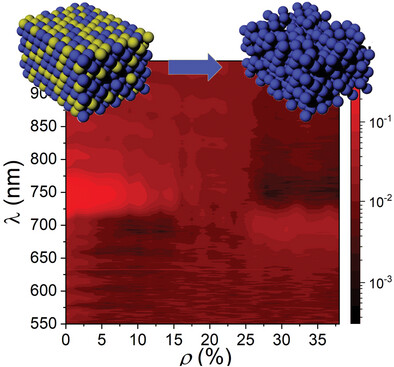
High quality colloidal crystals can be prepared with controlled vacancy doping. Their photonic bands produce optical properties dominated by a Bragg resonance. By increasing the doping concentration from the pristine crystal, this peak's lineshape undergoes a transition through a typical Fano resonance, to an anti-resonance that, finally, reenters an ordinary regime for high concentrations.
Photothermal-Switched Single-Atom Nanozyme Specificity for Pretreatment and Sensing
- First Published: 06 June 2023
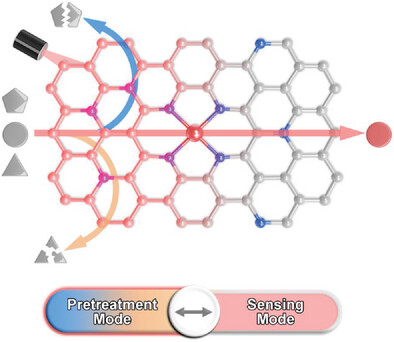
Copper single-atom nanozyme possessing photothermal-switched specificity is first reported in this study, where multiple enzyme-like activities and specific peroxidase-like activities can be used for sample pretreatment and sensitive sensing, respectively. Taking advantage of these characteristics, a pretreatment-and-sensing integration kit is constructed for point-of-care testing of various targets without interferences.
D-Band Center Optimization of Edge-Rich Ultrathin RuZn Nanosheets With Moiré Superlattices for pH-Universal Hydrogen Evolution Reaction
- First Published: 06 June 2023
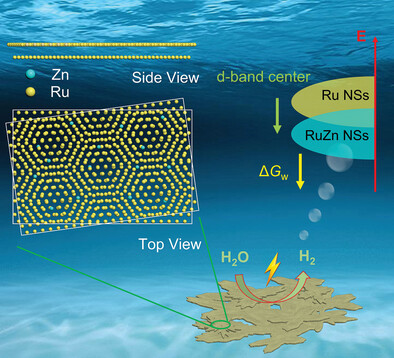
The edge-rich ultrathin RuZn nanosheets with moiré superlattices have been prepared, which have excellent pH-universal hydrogen evolution reaction (HER) performance. Theoretical calculations reveal that the doping of Zn makes the d-band center of Ru move down, which reduces the energy barrier of the hydrolysis reaction (ΔGw) and improves the HER activity.
Chirality-Induced Spin Selectivity of Chiral 2D Perovskite Enabling Efficient Spin-Dependent Oxygen Evolution Reaction
- First Published: 06 June 2023
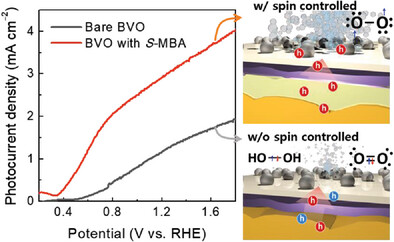
For the first time, it is demonstrated that exploiting the chirality-induced spin selectivity phenomena for photoelectrochemical water splitting with introducing chiral S-MBA-based 2D perovskites as a spin-filtering layer can be an efficient breakthrough strategy. This S-MBA-derived BiVO4 photoanode exhibits improved oxygen evolution performance (e.g., reduced overpotential of 0.14 V and 2.3-fold increased photocurrent) compared to devices without the spin-filtering layer.
Integration of Protein Nanocage with CpG Motifs: A Virus-Mimicked Core-Shell Nanostructure to Ignite Antitumor Immunity
- First Published: 07 June 2023
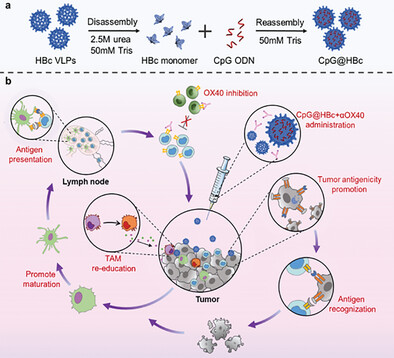
In this study, a nano-complex is developed that mirrors the structures and motifs of viral core-shell architectures. This virus-inspired protein nanocage is designed to stimulate in situ innate immune responses, invert the immunosuppressive characteristics of the tumor microenvironment, and enhance the efficacy of tumor immunotherapy. This formulation can potentially offer a distinct therapeutic strategy for cancer immunotherapy.
Low-Temperature Fabrication of Bulk-Type All-Solid-State Lithium-Ion Battery Utilizing Nanosized Garnet Solid Electrolytes
- First Published: 07 June 2023

Nanosized garnet Li6.5La3Zr1.5Ta0.5O12 (LLZT)-powder samples are successfully synthesized at a remarkably low temperature of 400 °C. The good room-temperature charge–discharge performance of the bulk-type NCM–graphite all-solid-state battery fabricated by hot-pressing sintering at 550 °C using the present LLZT fine powder sample as a solid electrolyte without any additives is demonstrated.
Altering Mechanical Properties to Improve Electrode Contacts by Organic Modification of Silica-Based Ionogel Electrolytes for Sodium-Ion Batteries
- First Published: 07 June 2023
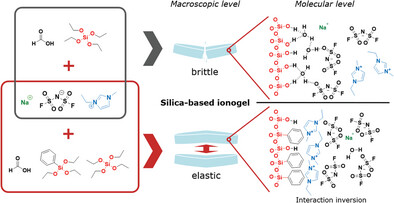
Na-ion conducting silica-based ionogel electrolytes are modified with phenyl groups to improve the mechanical characteristics for improved interfacial contact. Consequently, a reduction of the charge transfer resistance in Na|ionogel|Na2Ti3O7 half cells is achieved. The ionogels' ionic conductivities are impacted because of pi-stacking between the phenyl groups on the silica matrix and the imidazolium cations of the ionic liquid electrolyte (ILE).
On the Working Mechanisms of Molecules-Based Van der Waals Dielectrics
- First Published: 07 June 2023
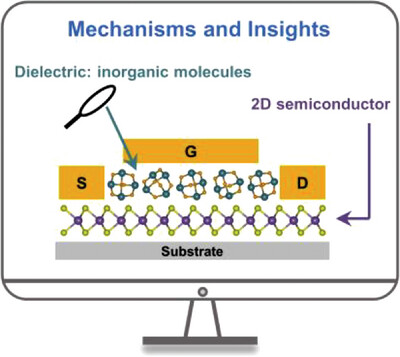
This work systematically investigates the working mechanisms of molecules as van der Waals (vdW) dielectrics, and thus reveals two important new insights. An important advantage of molecules-based vdW dielectrics over conventional dielectric materials is that defects hardly affect their insulating properties. As2O3 is an unprecedentedly competitive candidate as a vdW dielectric for 2D vdW semiconductors-based complementary metal-oxide-semiconductor applications.
Giant Energy Storage Density with Antiferroelectric-Like Properties in BNT-Based Ceramics via Phase Structure Engineering
- First Published: 07 June 2023
Unveiling Superior Capacitive Behaviors of One-Pot Molten Salt-Engineered B, N Co-Doped Porous Carbon Sheets
- First Published: 31 May 2023

A porous structure of B, N co-doped carbon sheet is designed via one-pot molten salt treatment. The B, N co-doped porous carbon sheet ensures distinctive surface properties and multiple-size pores, which results in a much higher energy density and power density when B, N co-doped porous carbon sheet electrode is assembled into symmetric supercapacitors by using TEABF4 electrolyte.
A Newly Crosslinked-double Network PEDOT:PSS@PEGDMA toward Highly-Efficient and Stable Tin-Lead Perovskite Solar Cells
- First Published: 09 June 2023
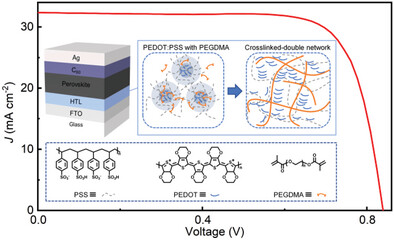
In inverted perovskite solar cells (PSCs), the hole transport layer (HTL) structure/morphology can greatly affect the quality of the perovskite film. In this paper, a newly crosslinked double-network of PEDOT:PSS@PEGDMA as HTL was used to fabricate Sn–Pb PSCs, and achieve an encouraging power conversion efficiency of 20.9% with good stability.
Microfluidic Synthesis of Ultrasmall Chitosan/Graphene Quantum Dots Particles for Intranasal Delivery in Alzheimer's Disease Treatment
- First Published: 12 June 2023
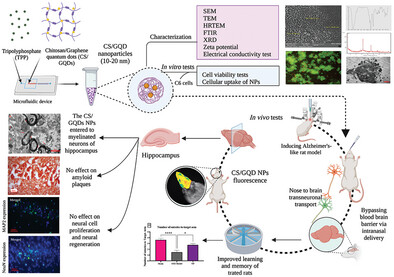
The ultrasmall chitosan/graphene quantum dots nanoparticles are developed via microfluidic technique with optimized properties for brain targeting as theranostic agents in Alzheimer's disease (AD). Although the nanoparticles exhibit no effect on amyloid β plaque clearance and MAP2 and NeuN expression in treated brains, they can positively impact memory recovery after their intranasal delivery to the brain of AD rat models.
A Self-Templated Design Approach toward Multivariate Metal–Organic Frameworks for Enhanced Oxygen Evolution
- First Published: 13 June 2023
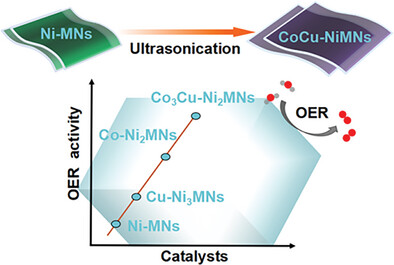
A simple self-templated design strategy is established to obtain two kinds of ternary metal–organic frameworks (MOFs), CoCu-NiMOF nanosheets (MNs) and microflowers (MFs), which demonstrate the excellent oxygen evolution reaction (OER) performance based on the Co–Cu concerted active sites, along with a strong synergistic effect of Ni node, thereby accelerating the OER catalytic rate.
A Forceful “Dendrite-Killer” of Polyoxomolybdate with Reusability Effectively Dominating Dendrite‑Free Lithium Metal Anode
- First Published: 13 June 2023
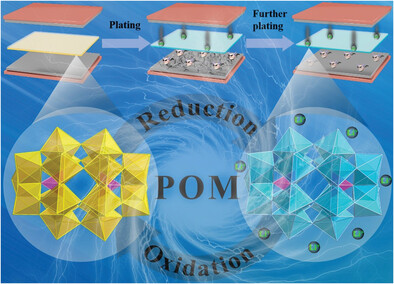
When the deposited lithium forms dendrites and touches the separator, the optimized Dawson-type (NH4)6[P2Mo18O62]·11H2O (P2Mo18) with strong oxidation ability can destroy them like a “killer”. Furthermore, P2Mo18 can be reused during lithium plating/stripping process, accompanied by the conversion between its oxidation and reduction states, greatly improving the utilization rate of functionally modified materials.




